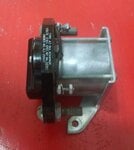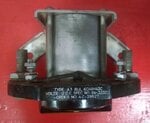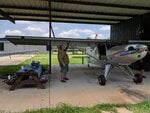manta22
Banned
I have a large relay that looks like the type that was used as an engine starter contactor on WW II aircraft. It is marked "Type A3 BUL 6041H43C" and it looks like the ones made by Cutler-Hammer or Eaton. The puzzle it that it is 12 volts, not 24 volts. What might it have been used on?
It appears to be NOS, never used. I'm using it as the main power relay on a race car that I built.
Thanks, Neil Tucson, AZ
It appears to be NOS, never used. I'm using it as the main power relay on a race car that I built.
Thanks, Neil Tucson, AZ




